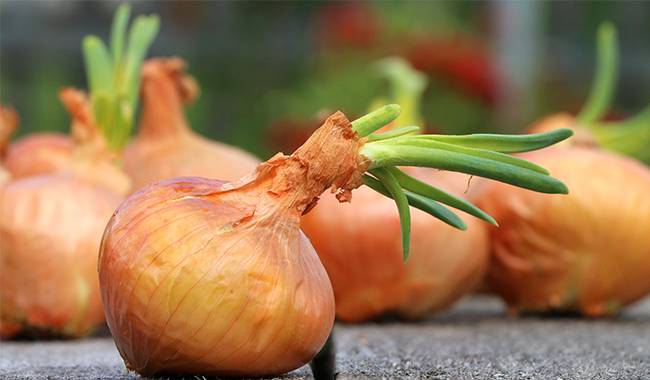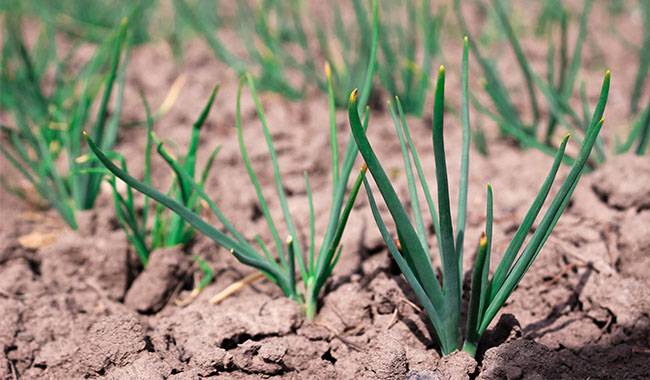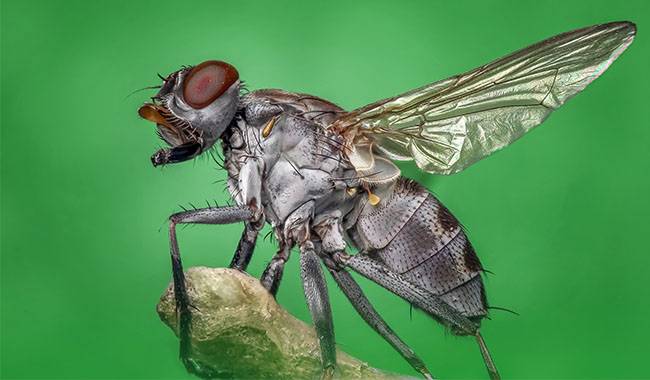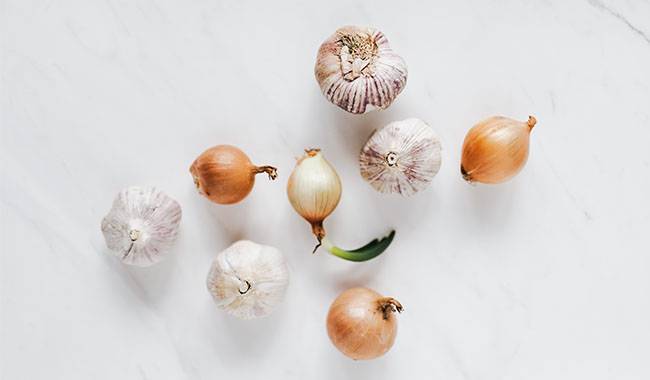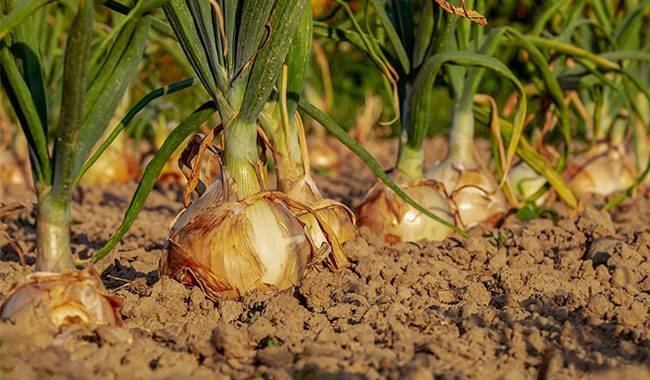
Onion is a vegetable that is grown worldwide today, from tropical to northern latitudes. It has a considerable number of species in the flora (500-600 species), but the most common is the onion.
They can be grown in several ways. Traditionally – in a 2-3 year crop, by obtaining seed onions or selecting from large bulbs. Or directly from seeds as an annual crop.
In this article, we will talk about nursery methods for growing onions from seeds.
BENEFITS OF GROWING ONIONS FROM SEEDLINGS
In southern regions, overwintering or early spring sowing of onions is done directly in the soil. With this method, the bulbs of early varieties and hybrids have time to mature in 1 season.
In areas where warmth and light hours are limited (areas with frequent cloudy days), open ground annual onions can only be obtained by germination.
The reader may have a doubtful thought – is it necessary to bother about raising seedlings? Let us consider the advantages of the suggested method of cultivation.
For propagation, seeds are used, which are obtained by growing uterine onion bulbs. In the 2nd year, onion seeds are grown from them.
In the 3rd year, mature onions are obtained by growing onion seeds. It takes a long time to get a mature onion for food use. Applying the germination method of growing onions, you can take out a crop of onions weighing 100-400 grams per year (depending on the variety or hybrid).
Growing onions by the germination method can shorten the asexual reproduction period of open plants by 50-60 days. This is the age of the sprouts planted in the open ground.
Onions belong to the group of plants with a short dormancy period. It is practically impossible to save harvested onions, especially slightly hot and sweet varieties of early and medium-ripening onions, until the next harvest.
By January, onions and onion seeds of these varieties germinate, soften, and begin to rot. However, even if the seeds can be saved, these varieties will return to failure during the growing season and the onions become incomplete.
The method of germination of onions grown from seeds considerably extends the storage period of the bulbs. Annual onions do not germinate, which helps to obtain a plump onion and it matures in quality. These bulbs can be stored for up to 9 months without sprouting or rotting.
In addition, this method of growing onions has several other advantages compared to other methods.
- If you compare the price of 1 kg of onion seeds (arbazheika) and chernushka seeds, it is several times cheaper to obtain a mature onion.
- One does not get a complete crop of cheap onions in 2-3 years, but in one season (i.e. every year).
- When growing by sprouting, the onion growth and development period in the open ground is shortened by 2 months on average, which allows you to obtain mature onions even in areas with unsuitable climates (short summers, rapid onset of cold autumn, rainy or freezing weather).
- Growing onions by sprouting is a physically very cost-effective way to obtain healthy plants from the emergence of seedlings (circles) to adult plants.
Therefore, let’s take a closer look at the technique of growing onions through sprouts.
PREPARATION OF SOIL FOR ONION SEEDLINGS
Sowing of onions is done from late February to early March in order to plant onion shoots in permanent cultivation in the open ground in late April.
Please remember! Planting too late can have a negative effect on onions.
The best soil composition is a mixture of sod and humus with sand added in a 2:2:1 ratio.
You can use a sand-bacon or sand-compost (compost should be mature) mixture at a ratio of 2:1. coco coir soil or other soil amendments can be used instead of sand.
Any mixture should be light, breathable, and permeable, easily shaken off from the plant roots. Natural additives in the soil mixture (turf soil, etc.) should be sterilized by one of the commonly used methods.
If thermal disinfection is used, the prepared mixture must be treated with an organic concentrate within 2.0-2.5 weeks, covered with aluminum foil, and placed in a warm place.
Soil mixtures can be treated with biological fungicides such as “Prevention and treatment of plants against fungi”.
PREPARATION OF ONIONS FOR SOWING
In order to avoid wasting time on preparing and processing seeds, it is recommended to buy them from specialized stores of well-known companies. Each variety has its own characteristics and requirements for life support, which affects the quality of the grown seedlings. Seeds should be packaged accordingly. There are appropriate markings and explanations on the back of the package or liner.
Self-grown onion seeds should be sterilized by heat treatment or (more practically) in a manganese solution (1 g/1 liter of water) for 0.5 hours. Instead of manganese, a solution of a bio fungicide can be used for seed disinfection. After disinfection, seeds can be soaked in “root growth root stimulant”, etc.
All seed treatments are carried out in warm water at a temperature of 77-86 °F (25-30 °С). After treatment, the seeds should be spread on a moisture-absorbing material and allowed to dry. After drying the seeds should be loose. The prepared container or seedbed should be soaked in warm water and seeds should be started the next day in wet soil.
Do not forget to check the germination of purchased and self-seeded seeds before sowing. It should be at least 80% (out of 10 seeds in 2-3 replications, 8 should emerge within a week). If the germination rate is low, you will have to increase the sowing density, which will affect the quality of the seedlings (the amount of waste of underdeveloped seedlings will increase).
SOWING ONION SEEDLINGS
Make furrows 0.6-0.8inch (1.5-2 cm) deep and 2-2.7inch (5-7 cm) wide between rows on a flat, moist soil surface. Sow seeds at a rate of 15-20 g/m2 of area. Scatter onion seeds into the furrow and cover them with mature fine humus, sand, or soil substitute (vermiculite, etc.).
Sprinkle the fine strainer with warm water. Cover with aluminum foil and place in a room where the air temperature is in the range of 64-77°F (18-25°С).
Remove the film for a period of time every day for ventilation and elimination of dripping. Watering is usually not carried out until the seedlings appear. However, if the top layer is significantly dry, it is gently watered with water at room temperature through a fine strainer. For 4-6 days after seedling emergence, the room temperature is lowered to 57-60°F (14-16°С) during the day and 46-48°F (8-9°С) at night.
Lowering the temperature eliminates stretching of seedlings and shrinkage of seedlings. In the subsequent period, the room temperature is kept in the range of 59-62°F (15-17°С).
Experienced gardeners recommend sowing corals in boxes of 2-4 onion seeds per compartment. Of course, it is cheaper to grow seedlings in boxes, but boxed seedlings have their own advantages. In the box, seedlings do not get sick and require less care. It is easier to separate them into individual plants before planting them in the ground.
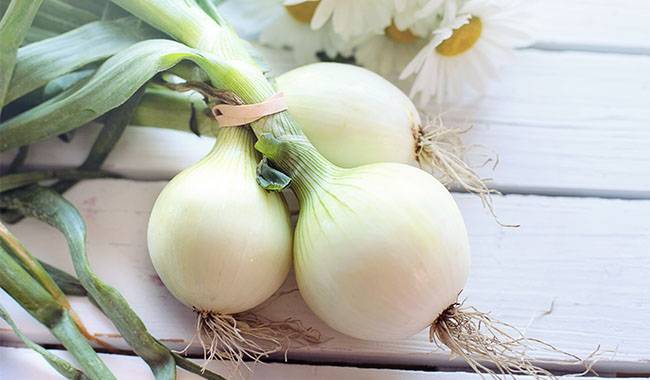
CARING FOR YOUNG ONION SEEDLINGS
Seedlings are cared for by maintaining the proper length of daylight, timely watering, feeding, and preventing pests and diseases.
Length of daylight hours
The length of daylight hours varies depending on the age of the seedlings. Therefore, additional lighting from plant lights or other lights should be provided for onion shoots.
Daylight hours after germination should be at least 15-18 hours for northern onion varieties and 13-15 hours for southern onion varieties. Shorten the length of the light day to 10-12 hours about 2 weeks before planting seedlings in the ground. This technique will have a positive impact on the maturation of onions.
Watering of seedlings
During the growth and development of onion shoots, water them every 2-3 days at a moderate rate (do not water). After watering, loosen rows, remove weeds and sprinkle with dry sand or crushed humus. Water too much, the soil is too wet, seedlings are stretched and feathers droop.
Fertilization of seedlings
After 3 weeks, feed onion seedlings with a nutrient solution of nitroglycerin or other whole fertilizer at a rate of 1.5 tablespoons per 10 liters of water while watering once a week. Fertilization with ammonium nitrate alone is not recommended. You can replace mineral nutrition with an infusion of wood ash or chicken manure, using a working solution diluted 10-12 times as much as the primary infusion.
Hardening off seedlings
After 40-45 days, the seedlings start to harden. Take them out during the day and put them on the balcony or in the fresh air. Seedlings should be kept out of direct sunlight.
Protecting seedlings from pests and diseases
Onion seedlings are usually not damaged by pests and diseases. peronosporosis can affect seedlings in case of excess moisture and low temperatures. The main source of infection is fungal spores left in poorly disinfected soil.
Affected leaves have oblong gray, brown, or black spots. Mycelium of the fungus can enter the bulb. Infected bulbs dramatically reduce their shelf life, rot, and germinate rapidly.
Protection is provided by spraying with antifungal bio fungicide solution or Bordeaux mixture 1%. application of chemicals for seedling protection is prohibited when seedlings are raised in indoor conditions.
PLANTING ONION SEEDLINGS IN THE GROUND
Seedlings can be transplanted into the ground when they reach the age of 50-60 days. Earlier or later planting can adversely affect the rooting of the plant and can increase mortality.
Onion shoots are transplanted to a pre-prepared seedbed in dry, warm weather. Seedlings are sorted before planting, leaving only well-developed seedlings that are 5-6inch (13-16 cm) in height and have 3-4 healthy green true leaf feathers.
If seedlings are selected in bunches, separate them into individual plants. To avoid damaging the roots when separating the plants, the roots can be washed off by gently shaking them in water to remove compacted soil clods. Underdeveloped and damaged seedlings should not be used for replanting.
Seedlings selected for planting should have 1/3 of their leaves cut off and the roots cut to 0.8-11inch (2-2.5 cm). Cowpea and clay soil is used to soak the roots, or the plant roots can be soaked in a solution of any root forming agent for a period of time.
Onion seedlings are planted in rolls, leaving 5 distances per row and at least 14-16-21inch (35-40-55 cm) between rows, depending on the variety or hybrid (with very large, medium, or relatively small bulb repeats).
Onion seedlings go into the soil at 0.8-11inch (2-2.5cm) and go deeper. The plant is curled on all sides to eliminate soil voids around the roots and increase the contact area. If the soil is moist, water 2-3 days after planting. If the soil is dry, water immediately and with sufficient water.
After planting, cover the soil with any fine mulch. The first shallow loosening of the soil can be done 3-4 days after planting to avoid damaging the root system of young seedlings. If all procedures are carried out according to quality, then seedlings will take root and enter the growth stage in the shortest possible time.
CARING FOR ONION SEEDLINGS IN THE OPEN GROUND
Further care of the plants is reduced to keeping the soil free of weeds, thinning (especially if planting in bunches of 2-3 plants to get fresh green plants at breakthrough), watering, fertilizing, and preventing pests and diseases.
Watering
The first watering of transplanted onions in the field is done 15-20 days after transplanting (if the soil is moist at the depth of 2 French balls). Otherwise, watering should be done earlier (after 12-14 days). Subsequent watering is done as needed.
Fertilization
Fertilize the onions twice during the growing season. The first from mid-May and the second in mid-June. The first feeding is best carried out with a diluted working solution of wood ash or organic solution, using 10 liters of the solution per 10 linear meters of planting.
The second – phosphorus-potassium fertilizer at a rate of 25-30 grams / 10 square meters. By this time, the root system will grow and occupy a large area around the formed bulbs.
Prevention of diseases and pests
In the field conditions of open onions, they are often affected by onion fly and false powdery mildew.
Most commonly, in wet weather (after heavy rains) and cold temperatures up to 53-55°F (12-13°C), onion leaves become covered with soft gray pubescence, rapidly turn yellow, and then die.
The most effective way to prevent the disease is to spray the soil and plants with a 1% Bordeaux mixture after you have sucked in water, or with a bio fungicide active on the soil and plants.
Dear readers
A method for you to accelerate the yield of onion bulbs of different varieties and hybrids is provided. Does this method appeal to you?
What questions remain unanswered? Is it new to you or has it been tested for a long time? Share your results with us.




